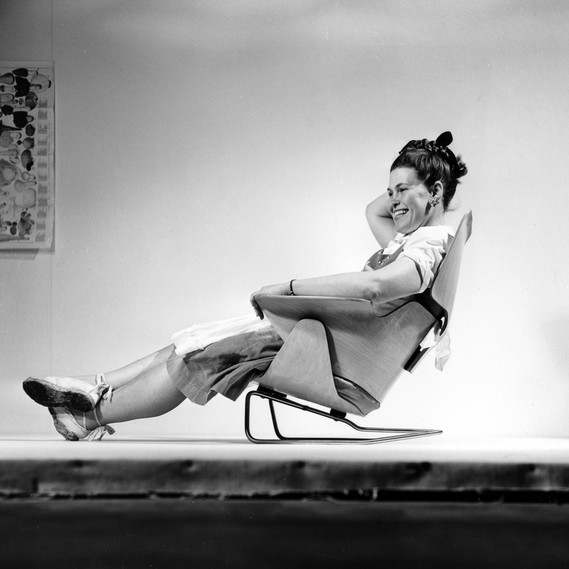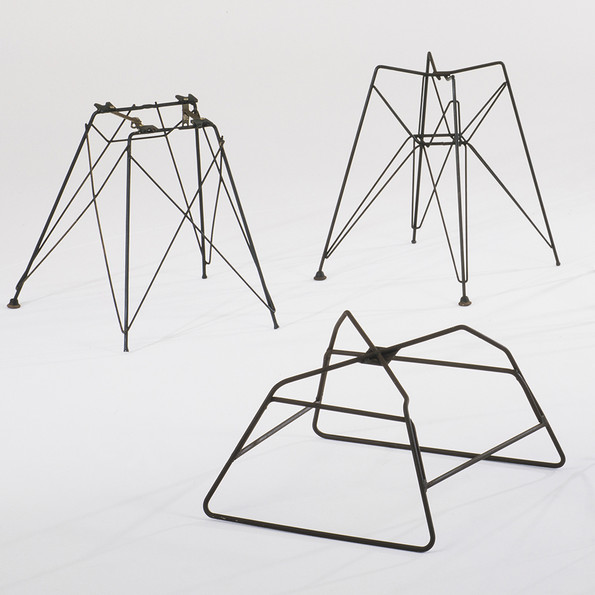Kazam! The Furniture Experiments of Charles & Ray Eames
30.09.2017 – 25.02.2018
Schaudepot
Over the course of a professional and personal partnership lasting nearly four decades, Charles and Ray Eames worked together with their employees in the Eames Office to develop many individual pieces and groups of furniture that are regarded today as design icons. These include the Plywood Group, the Fibreglass Armchair and Side Chair, the Aluminium Group and the legendary Eames Lounge Chair. Such designs were the result of a development process in which intensive research and playful experimentation went hand in hand, often extending over a period of several years – if not decades. Materials and production methods were critically examined and tested before an object acquired its final form. Even after a design had entered production, it was continually refined and further developed. Emerging from the trials with different materials and moulds were a large number of experimental prototypes, as well as many variations of individual furniture pieces, and the tools and instruments necessary for their manufacture. The majority of these experimental models and tools from the Eameses‘ furniture archive have been in the holdings of the Vitra Design Museum since 1988. A representative selection of these pieces is being shown for the first time in an exhibition dedicated solely to this topic. Three areas of emphasis offer insights into the Eameses’ design philosophy, conceptual approach and development process: chair shells, bases and tools. Experiments and studies for one-, two- and three-piece seat shells made of plywood, aluminium or fibreglass illustrate the couple’s quest over many years to create comfortable, aesthetically pleasing, industrially manufactured chairs, which were employed by the Eameses in a wide variety of settings. Models and prototypes of furniture bases made of steel wire or aluminium demonstrate how many stages a design had to progress through before it was finally ready for mass production. Charles and Ray Eames’s comprehensive view of the designer’s task is exemplified by the wide array of tools they constructed for ergonomic research or for the fabrication of their experimental furniture. The title of the exhibition refers to the hot press machine built by the Eameses in their Los Angeles apartment in 1941 for the purpose of moulding plywood. They named the device the »Kazam! machine« because of its seemingly magical ability to transform thin, flat layers of wood into a three-dimensional seat shell.




